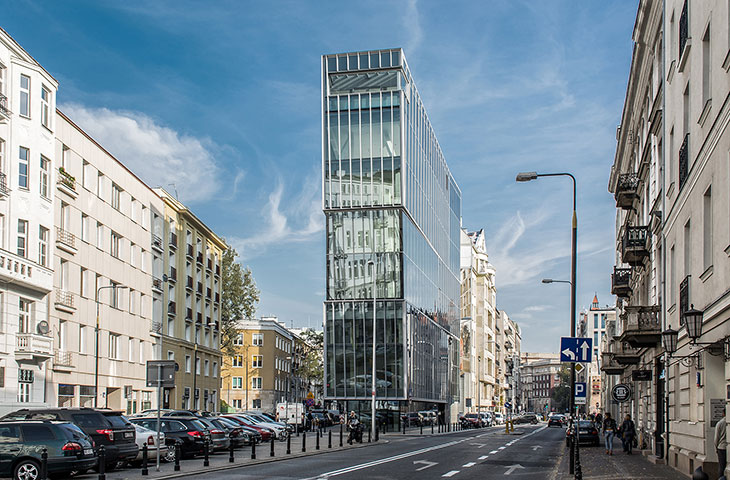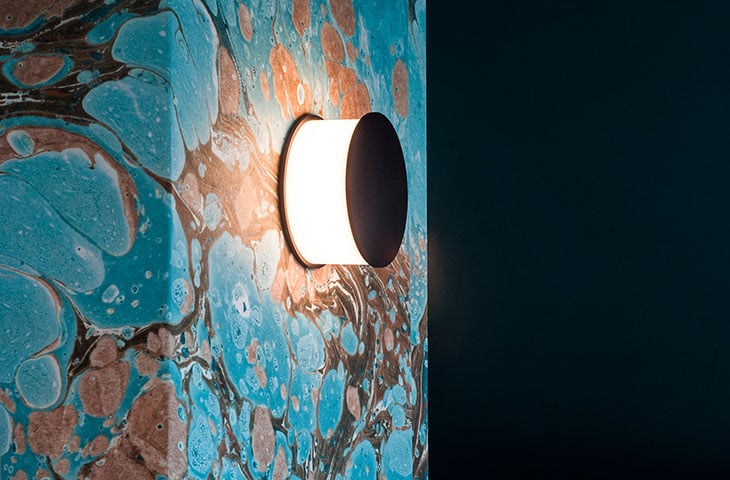Commissioned to develop the interior concept for The Nest, a modern coworking space in the heart of Warsaw, Poland, design leaders Anna Łoskiewicz-Zakrzewska and Zofia Strumiłło-Sukiennik from design studio Beza Projekt, started the creative process by dwelling on the essential question: How do we really want to work today?
The Nest persona
Realizing that the lines between work and leisure are becoming more and more blurred both in the sense of working hours and place of work, the design duo decided to wrap their concept around a specific persona. They defined the modern coworker as a self-confident individual who values her, his or their time highly, which means that the coworking person might only work a few hours a day with the flexibility to work at weekends.
To meet these new ways of working, the Beza Projekt design team strived to develop spaces that aren’t office-like but on the contrary radiate a more club-like atmosphere with a comfy and cosy feel.
Edgy on the outside, soft on the inside
The Nest is framed by a great piece of architecture by Polish architects G5 Architekci. In contrast to the graphic and angular lines of the eight-storey building’s structure, the design team created their own language of colour, pattern, texture and material, which is beautifully organic and vivid.
With the aim of keeping the floor plan as open as possible, the streamlined “nesting” experience was created through carefully specified details. For instance, by introducing round and oval furniture and finishings in order to balance the outer hard-edged shapes.
The interior has been thoroughly designed with both functionality and Polish and European brands in mind to make the coworking space feature not only the best concept and collaboration platform, but efficient work-life balance as well.
Nesting patterns
A very important part of The Nest brand identity system is the beautiful marbling textures made by Kasia Korzeniecka. Transferred to wallpaper, the patterns are applied onto pillars that are present throughout the entire building. And though different in design, they create a consistent space perception both horizontally and vertically.
Custom details on ceramic tiles and carpets beautifully combine with simple materials like coloured MDF and veneer to create a rich, abundant and luxurious, yet close, organic and comforting feeling.
The carpet tiles featured are from the ege carpets sustainable collection ReForm Terra Ecotrust, that matches the colour scheme perfectly. The specific design was chosen because of the vibrating pattern that perfectly follows the tactile and warm interior concept.
ReForm Terra Ecotrust
The multidimensional ReForm Terra Ecotrust collection brings abstract patterns to the flooring surfaces and features various yarn layers constantly revealing new details to the watchful eye. The carpet front is made from ECONYL® yarns based on used fishing nets and other waste materials. Combined with the patented Ecotrust backing produced from used water bottles this is a truly green and Cradle to Cradle CertifiedTM product.
Flexible furniture for all situations
Two furniture systems are found in The Nest. One dedicated to open spaces consisting of tables and sofas that can be combined into comfy islands, including elevated places for plants and display items. The second system is dedicated to office areas and consists of desks, cabinets and two-sided bookstands, far more traditional compared to the first system. Depending on personal preference and need state, this range of furniture offers a wide spectrum of different workplaces to choose from.

We encounter spaces that are unlike traditional offices, filled with a cosy and comforting vibe to enhance the ultimate self-conscious modern work process. Anna Łoskiewicz-Zakrzewska & Zofia Strumiłło-Sukiennik, Beza Projekt

















